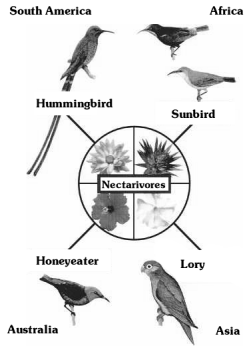The diversity and abundance of pollinators in the alpine environment is limited. The activity of invertebrate pollinators is especially restricted by weather (wind, low temperatures) and pollinating efficiency is low.
Flowers in alpine environment have adapted to this circumstance by increasing their attractivity for pollinators (large flowers with bright colours, high nectar production), having low specialisation (allowing visits from different invertebrate species), developing the possibility of self-pollination and by reducing the temporal and spatial separation of male and female organs or plants.
Flies (Diptera) as well as bees/wasps (Hymenoptera) are important pollinators for alpine plants. Whereas bees and wasps are more important at lower elevations, flies become increasingly dominant at higher elevations. Because cushion plants (e.g. Saxifraga spp.) have such a low and clumpy shape, beetles and other ground living invertebrates are their most important pollinators.
|

1 - Alpine meadow with a large variety of flowering plants. Photo: P. Vonow (178K)

2 - The timberline ecotone also provides a lot of food for nectarivores. Photo: P. Vonow (144K)
|



